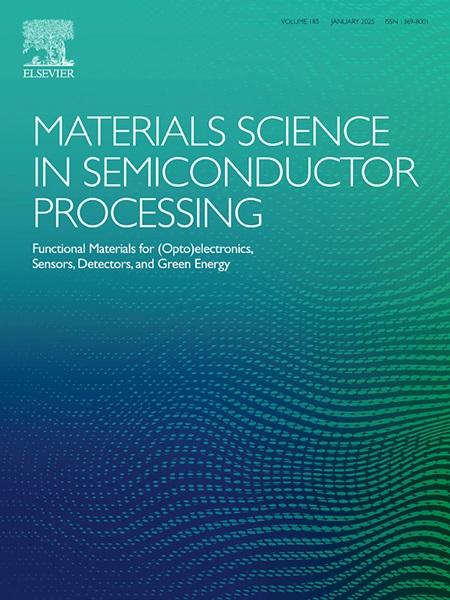Ultrasensitive determination of exosomal CD63: A novel label-free and self-assembled electrochemical aptasensor for cancer diagnosis based on magnetic heterostructured Fe3O4/α-Fe2O3 nanosheets
IF 4.2
3区 工程技术
Q2 ENGINEERING, ELECTRICAL & ELECTRONIC
引用次数: 0
Abstract
Cluster of Differentiation 63 (CD63) is one of the core marker proteins of exosomes and has been widely used as a biomarker for early screening of various cancers such as ovarian cancer and lung cancer, thus, its rapid and ultrasensitive detection is of great significance. This work presented a label-independent electrochemical aptamer (Apt)-based sensing platform for ultrasensitive exosomal CD63 determination. The core innovation lay in the development of magnetic Fe3O4/α-Fe2O3@Au-Apt complex probe, which streamlined operation via magnetic separation, improved antifouling performance through magnetic self-assembly technology, enhanced sensitivity by capitalizing on the superior conductivity of Au nanoparticles (AuNPs) and ensured specificity through the high-affinity interaction between aptamers and target. AuNPs were loaded on the surface of Fe3O4/α-Fe2O3 to improve its electrical conductivity while providing an anchor for the binding of thiol-modified Apt, and the bonding was achieved through Au-S bonds. After capturing the target, magnetic self-assembly was performed on the electrode surface for rapid detection. Under optimum conditions, the aptasensor demonstrated a linear response to CD63 between 100 pg/mL and 1 μg/mL, with lower detection limit reaching 13.4 pg/mL (S/N = 3). Furthermore, human serum samples validation achieved favorable recoveries (100.82–106.45 %), RSDs<3 %, confirming its robustness in complex matrices. Such an assay not only propels exosome-based liquid biopsy but also provides a novel strategy for diverse cancer related biomarkers detection through modular design of probe molecules and their synergistic incorporation with nanomaterials.

基于磁性异质结构Fe3O4/α-Fe2O3纳米片的新型无标记自组装电化学适体传感器外体CD63的超灵敏检测
CD63 (Cluster of Differentiation 63, CD63)是外泌体的核心标记蛋白之一,已被广泛用作卵巢癌、肺癌等多种癌症早期筛查的生物标志物,因此其快速、超灵敏的检测具有重要意义。这项工作提出了一个基于标签不依赖电化学适体(Apt)的超灵敏外泌体CD63检测平台。核心创新在于磁性Fe3O4/α-Fe2O3@Au-Apt复合探针的开发,该探针通过磁分离简化了操作,通过磁自组装技术提高了防污性能,利用Au纳米颗粒(AuNPs)的优异导电性提高了灵敏度,并通过适体与靶标之间的高亲和力相互作用确保了特异性。将AuNPs加载在Fe3O4/α-Fe2O3表面,提高其导电性,同时为巯基修饰的Apt结合提供锚点,并通过Au-S键实现结合。捕获目标后,在电极表面进行磁自组装以实现快速检测。在最佳条件下,该传感器对CD63在100 pg/mL ~ 1 μg/mL范围内呈线性响应,最低检出限为13.4 pg/mL (S/N = 3)。此外,人血清样品验证获得了良好的回收率(100.82 - 106.45%),RSDs< 3%,证实了其在复杂基质中的稳健性。这种检测不仅推动了基于外泌体的液体活检,而且通过探针分子的模块化设计及其与纳米材料的协同结合,为多种癌症相关生物标志物的检测提供了一种新的策略。
本文章由计算机程序翻译,如有差异,请以英文原文为准。
求助全文
约1分钟内获得全文
求助全文
来源期刊

Materials Science in Semiconductor Processing
工程技术-材料科学:综合
CiteScore
8.00
自引率
4.90%
发文量
780
审稿时长
42 days
期刊介绍:
Materials Science in Semiconductor Processing provides a unique forum for the discussion of novel processing, applications and theoretical studies of functional materials and devices for (opto)electronics, sensors, detectors, biotechnology and green energy.
Each issue will aim to provide a snapshot of current insights, new achievements, breakthroughs and future trends in such diverse fields as microelectronics, energy conversion and storage, communications, biotechnology, (photo)catalysis, nano- and thin-film technology, hybrid and composite materials, chemical processing, vapor-phase deposition, device fabrication, and modelling, which are the backbone of advanced semiconductor processing and applications.
Coverage will include: advanced lithography for submicron devices; etching and related topics; ion implantation; damage evolution and related issues; plasma and thermal CVD; rapid thermal processing; advanced metallization and interconnect schemes; thin dielectric layers, oxidation; sol-gel processing; chemical bath and (electro)chemical deposition; compound semiconductor processing; new non-oxide materials and their applications; (macro)molecular and hybrid materials; molecular dynamics, ab-initio methods, Monte Carlo, etc.; new materials and processes for discrete and integrated circuits; magnetic materials and spintronics; heterostructures and quantum devices; engineering of the electrical and optical properties of semiconductors; crystal growth mechanisms; reliability, defect density, intrinsic impurities and defects.
 求助内容:
求助内容: 应助结果提醒方式:
应助结果提醒方式:


